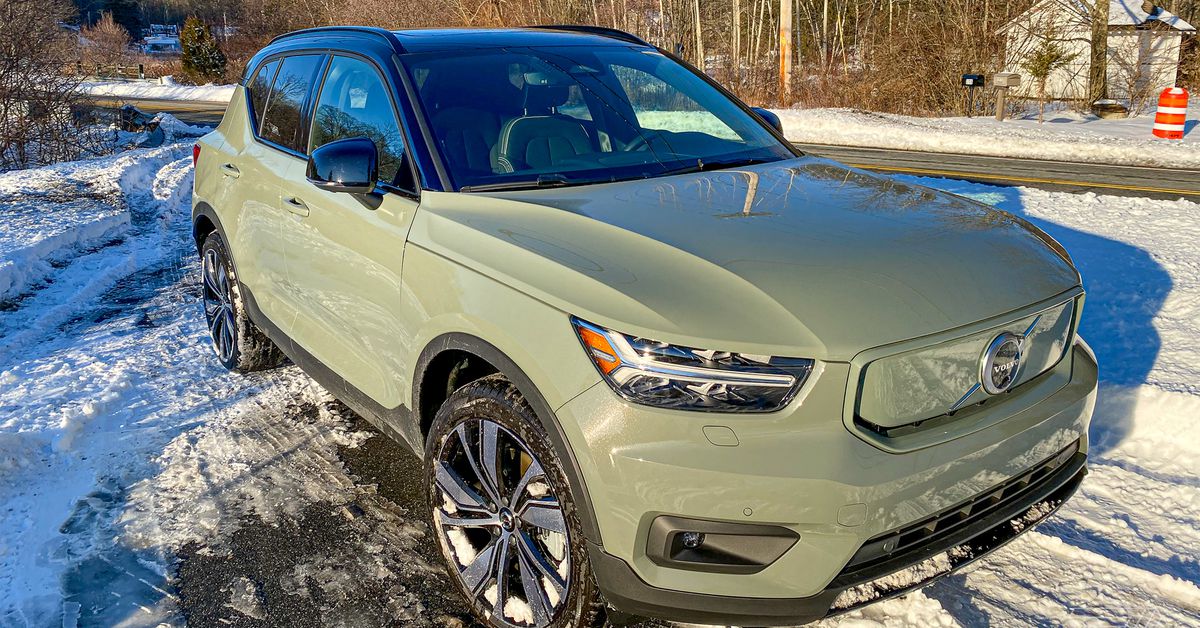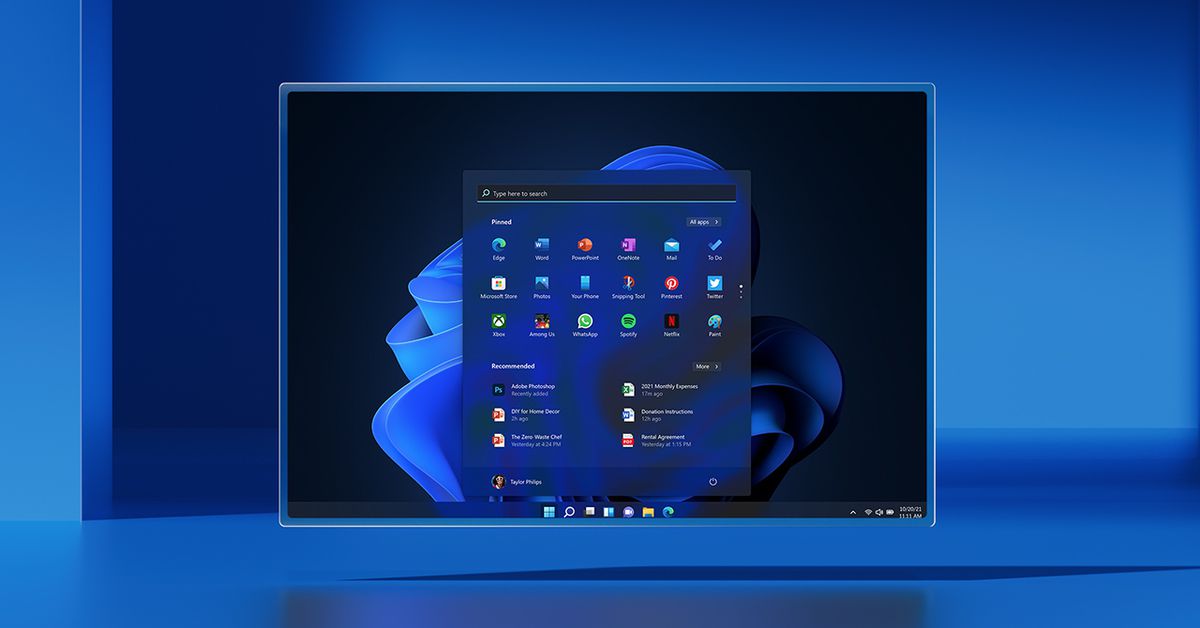Volvo confident it can get its ‘unsupervised’ highway driving mode approved in California
Photo by Andrew Hawkins / The VergeVolvo announced a new advanced driver assist system called Ride Pilot system, in which its vehicles drive themselves on certain highways without any human supervision. Ride Pilot will be available as a subscription...

Volvo announced a new advanced driver assist system called Ride Pilot system, in which its vehicles drive themselves on certain highways without any human supervision. Ride Pilot will be available as a subscription service to customers in California, the company announced at the 2022 Consumer Electronics Show.
It’s an ambitious plan that carries its own risks and sets Volvo apart from its competitors, many of which are planning to launch self-driving technology as part of a robotaxi service rather than production cars for personal ownership. But Volvo believes that by limiting the operational domain — or conditions under which the car can drive autonomously — to just highways, it is creating vehicle technology that is not only safer but less costly as well.
“We will not require hands on the steering wheel and we will not require eyes on the road,” Henrik Green, the automaker’s chief technology officer, said in an interview with The Verge. But when asked whether drivers will be able to take a nap in the car with Ride Pilot active, Green demurred.
“We’re still being very purposely non-distinct in the wake-up time that we require,” he said. “Taking a nap requires a wake-up time, so let’s see how far and when we can get there. You need to be able to assume control in a certain time and take back the driving responsibility.”
Pending regulatory approval, the new feature will only be available to customers in California at first. Green described the state as a “good geographic location in terms of weather conditions: it’s sunny, it’s got good road conditions.”
Volvo’s forthcoming (and unnamed) electric SUV, which will be announced later this year, will be the first vehicle to feature Ride Pilot. Volvo’s Concept Recharge, which was revealed last summer, is meant to preview that SUV, as well as how the new driver assist system will be presented with a fully integrated roof lidar from supplier Luminar. The design of the Concept Recharge will likely be similar to that of the electric XC90 successor due to arrive later this year.
In addition to Luminar’s lidar, Volvo’s Ride Pilot system will be powered by software developed by Zenseact, a subsidiary of Volvo which worked alongside the automaker’s own team of engineers. Luminar, which is based in Florida, has worked closely with Zenseact’s team in Sweden on a full-stack autonomous driving software for series production vehicles.
:no_upscale()/cdn.vox-cdn.com/uploads/chorus_asset/file/23144365/283690_Volvo_Concept_Recharge.jpg) Volvo’s Concept Recharge electric SUV, first revealed in the summer of 2021.Image: Volvo
Volvo’s Concept Recharge electric SUV, first revealed in the summer of 2021.Image: Volvo
Green wouldn’t say when it plans on officially activating Ride Pilot, but he noted that it will almost certainly be sometime after 2022. “What is still not super clear is obviously the timeline both from our confidence and our validation that we are good to go, and [the regulations] need to be in place,” Green said.
Ride Pilot is what the Society of Automotive Engineers would define as a Level 3 autonomous system, in which the driver’s supervision is not required in a highly controlled setting, like on certain mapped highways. But in Level 3 systems, the driver still needs to be ready to take control at a moment’s notice, leaving it somewhat in a nebulous zone between Level 2 advanced driver assist systems, like Tesla’s Autopilot, and fully driverless vehicles, like Waymo’s autonomous taxi service in Phoenix, Arizona.
California’s Department of Motor Vehicles oversees the largest autonomous vehicle testing program in the country, with over 60 companies permitted to operate test vehicles on public roads. Only a handful are approved to operate fully autonomous vehicles without safety drivers at the wheel, and even fewer have been approved to deploy vehicles for commercial purposes.
But what Volvo is seeking to do is a bit different. The automaker is applying for a permit to test autonomous vehicles on public roads through the state’s Department of Motor Vehicles. Rather than deploy its vehicles as part of a taxi or delivery fleet, Volvo wants California’s approval to offer its Level 3 autonomous system to customers as a part of a subscription service — something the state has yet to do for any company.
:no_upscale()/cdn.vox-cdn.com/uploads/chorus_asset/file/23146040/292922_Volvo_Cars_Concept_Recharge_with_Luminar_s_Iris_LiDAR_on.png) Volvo
Volvo
According to the DMV, a company wishing to deploy Level 3 capable vehicles on public roads must obtain authorization from the state before making their technology available to customers. Volvo has not applied for a deployment permit yet, a spokesperson for the agency said in an email.
Offering Ride Pilot as a subscription presents a lower hurdle to consumers, Green said, given the large percentages of people who lease their vehicles rather than own them. “Not everybody sits on a big amount of cash available,” he said. “Subscription is a very low hurdle you can try out.”
Most AV companies, including Waymo and Cruise, have said they are skipping Level 3 and working exclusively on Level 4 technology. The reason is that Level 3 is seen as being potentially dangerous, given the likelihood that drivers will be confused about when they need to takeover control of the vehicle.
Other automakers have been tripped up by the promise of Level 3 driving. In 2018, Audi said its A8 sedan would come with a feature called Traffic Jam Assist that, when active, would relieve human drivers of the need to pay attention during stop-and-go traffic. But the feature was contingent on approval from local authorities, and Traffic Jam Assist remains dormant in most markets around the world. Audi has no plans to activate the feature, and Level 3 automation remains a morass of legal, regulatory, and business-related challenges.
:no_upscale()/cdn.vox-cdn.com/uploads/chorus_asset/file/23146041/292920_Volvo_Cars_Concept_Recharge_safety_illustration.png)
Another potential hurdle is the potential for misuse by customers. A good example is Tesla’s Level 2 “Full Self-Driving” beta software that, despite its misleading name, still requires drivers to be vigilant while in use. Tesla’s customers often ignore the company’s warnings and misuse Autopilot to record themselves performing dangerous stunts. This type of rule-breaking is to be expected, especially in a society where clout-chasing has become a way of life for many people.
Green says it’s a communications and a technology challenge for Volvo to ensure its customers know when they need to take over and when they are misusing the system.
“It needs to be clear in the communication to the consumer,” he said. “It needs to be clear inside the vehicle while you are operating it. So a very important area.”

 JimMin
JimMin 































